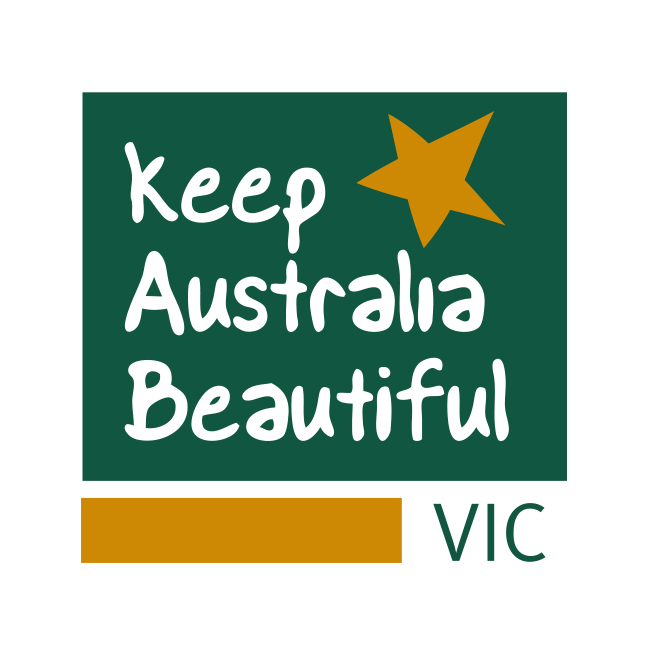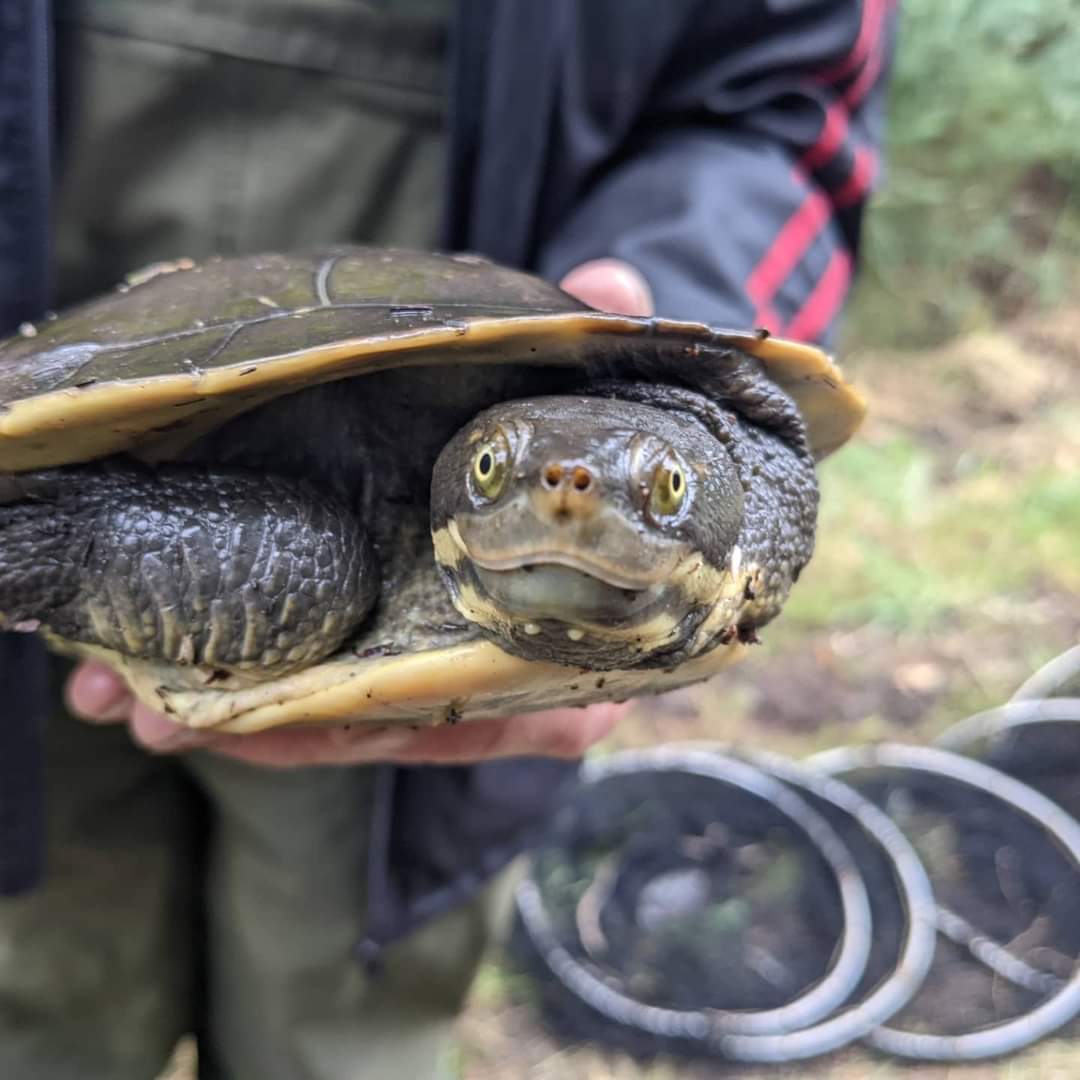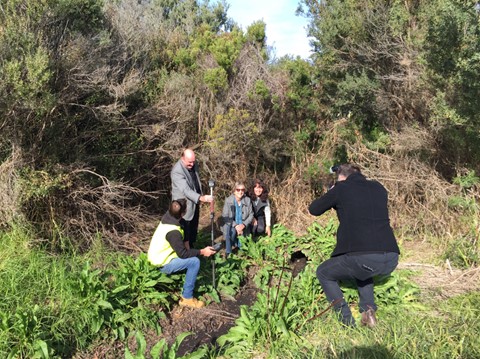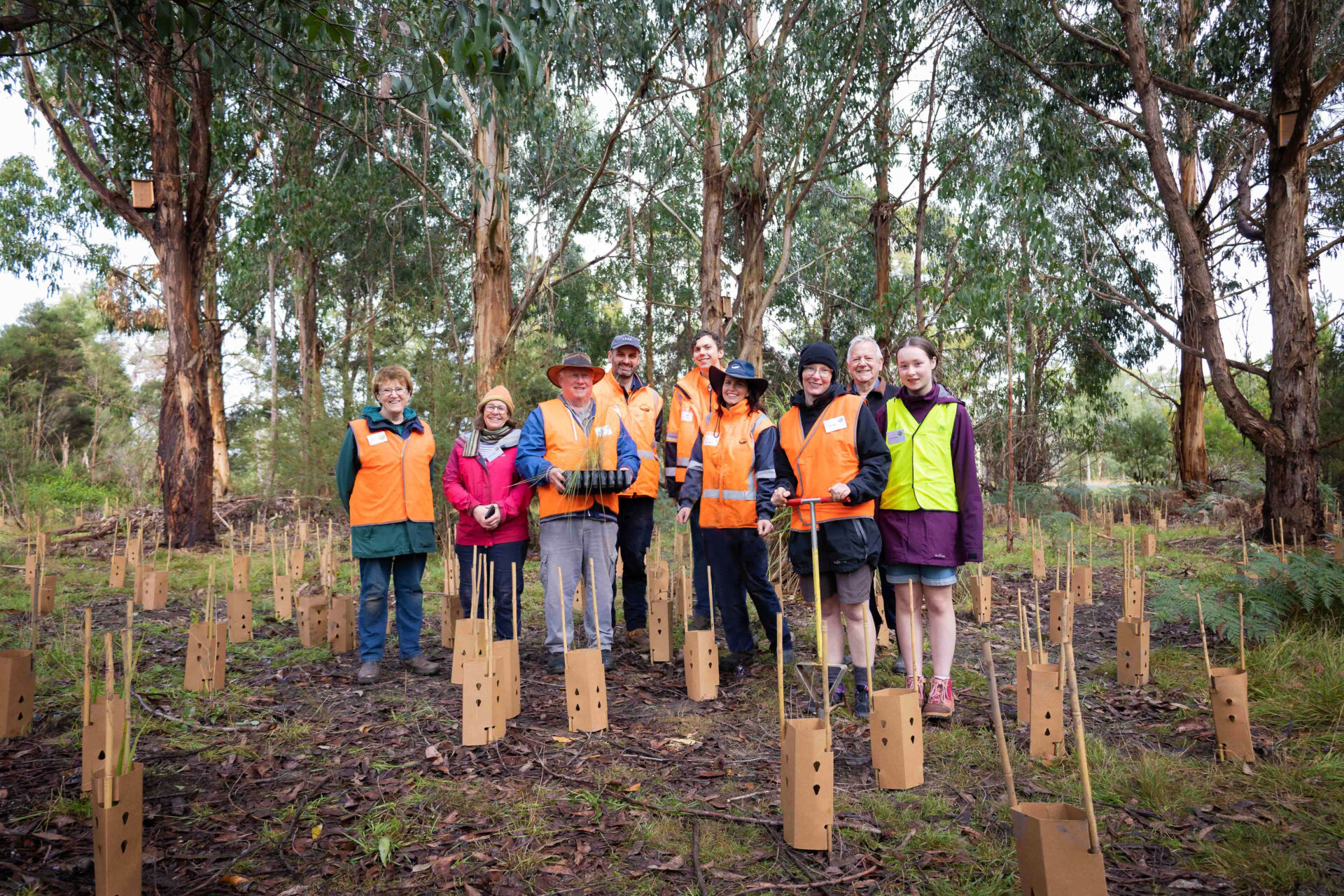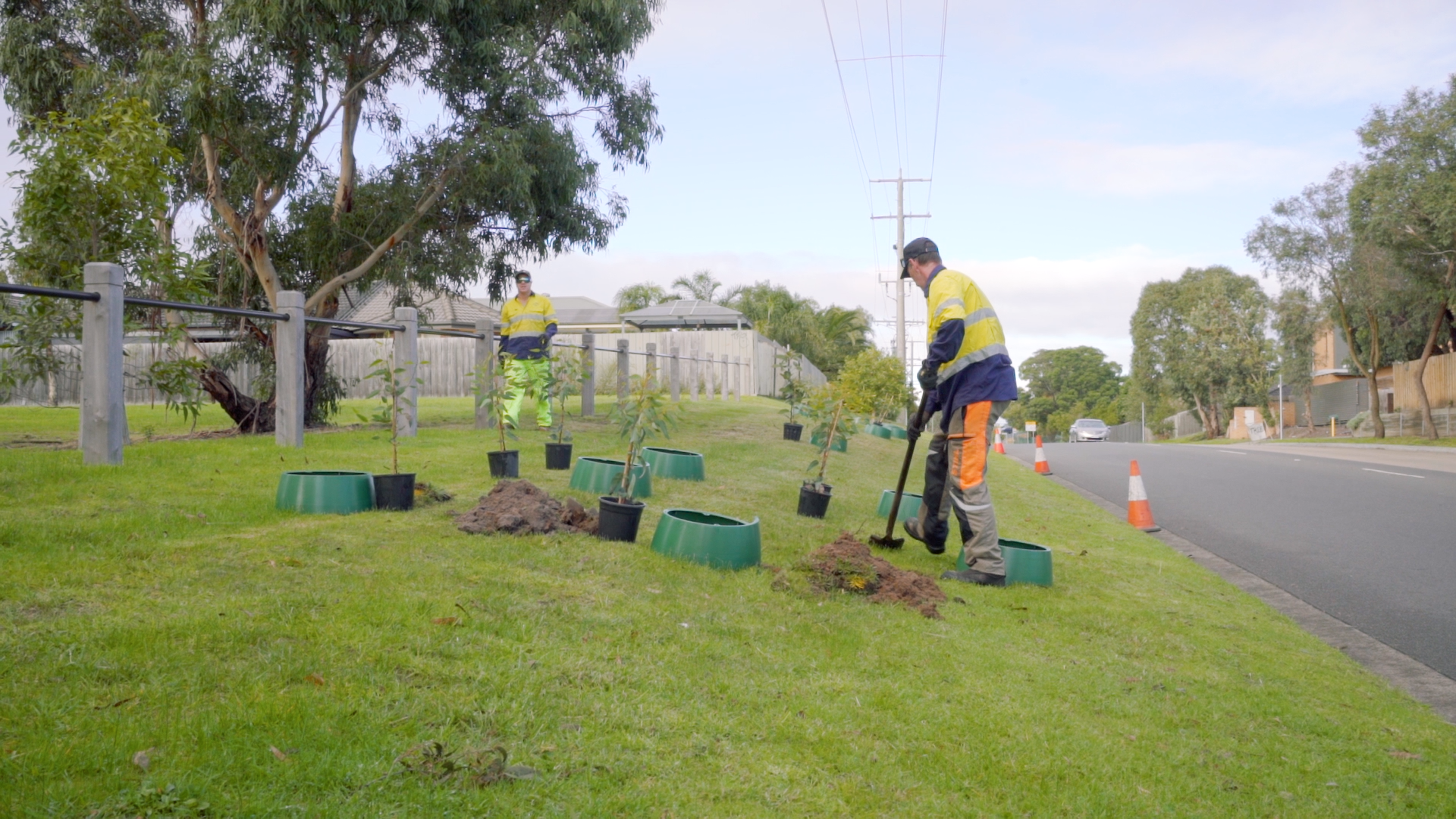2023 Tidy Towns & Cities Finalists:
Environment

Moorooduc – Mornington Peninsula Shire
The Citizen Science Crew at Daangean operates within Devilbend Natural Features Reserve on the Mornington Peninsula.. Spanning 1,005 hectares, the reserve is home to an impressive array of wildlife, including 162 bird species, mammals, and reptiles. Daangean, the original name for the area, has been nurtured by the Boon Wurrung / Bunurong people for over 40,000 years. With recognition from BirdLife Australia as a globally significant bird conservation area, Devilbend is a cherished location. Collaborating with partners such as Boon Wurrung / Bunurong, Parks Victoria, Melbourne Water, and passionate community groups, efforts are underway to preserve this unique space for future generations.
Rye – Mornington Peninsula Shire
Mornington Peninsula Shire has successfully constructed their largest Water Sensitive Urban Design (WSUD) asset in a coastal environment. The project, a bio infiltration basin along Rye foreshore and the bay trail, serves as a coastal wetland. Despite significant challenges, such as sand migration, high tides, storm surges, predicted sea level rise, and groundwater levels, this community-driven initiative has created an efficient natural filtration system that treats stormwater before it reaches the Bay.
Drouin – Baw Baw Shire
Friends of Drouin’s Trees (FoDT) is a community group established in response to a request from the Baw Baw Shire’s environment office. Their initial goal was to compile a Significant Tree Register for their town amidst the first Precinct Structure Plan for the state being developed in Baw Baw Shire. Drouin and its surrounding region boast a remarkable environmental legacy, characterised by farming and services. FoDT has tirelessly worked to raise awareness about the invaluable environmental assets in their backyard and the importance of safeguarding them.

Geelong – City of Greater Geelong
Each year, the Friends of the Bellarine Rail Trail dedicate around 1,500 volunteer hours and plant approximately 7,000 plants to enhance and maintain the Rail Trail. Their efforts have turned the once barren and unused rail corridor into a remarkable biodiversity corridor. This transformation has created a vibrant ecosystem that attracts thousands of visitors annually, providing them with a picturesque and enjoyable experience along the trail.
Frankston – City of Frankston
Frankton City Council has embarked on an ambitious mission to plant 20,000 trees per year over a span of four years, aligning with their Urban Forest Action Plan (2040). In its second year, the project has successfully planted 40,000 trees across city streets, natural reserves, and open spaces. This initiative showcases the council’s dedication to environmental sustainability and its commitment to building a greener and more livable city. By increasing the tree canopy, the council aims to make a substantial contribution to supporting local biodiversity and fostering a healthier, more sustainable environment for the entire community.
Sunbury – City of Hume
Situated in a residential area northwest of Metropolitan Melbourne, St. Anne’s Primary School recognises the negative impact of exotic species planted by residents on local biodiversity. To address this issue, they initiated the Pollinator’s Corridor project, reintroducing diverse indigenous species specific to their municipality. As the plants establish themselves, an array of pollinators, including blue banded bees, endangered ant species, and native butterflies have begun to appear. The project is being expanded to create a larger corridor, incorporating more native plants, habitat rocks, and a pathway to encourage student engagement. The school community remains dedicated to educating students and families, fostering awareness about the vital importance of biodiversity in their local environment.
